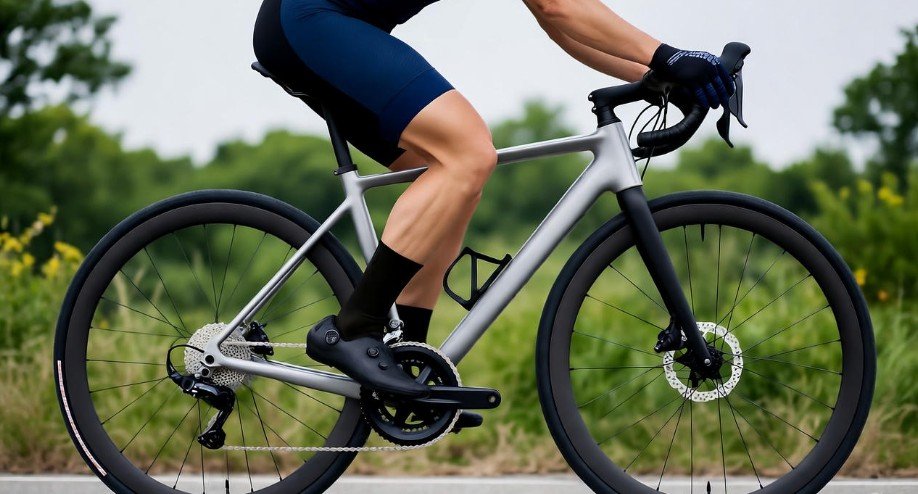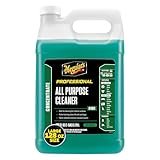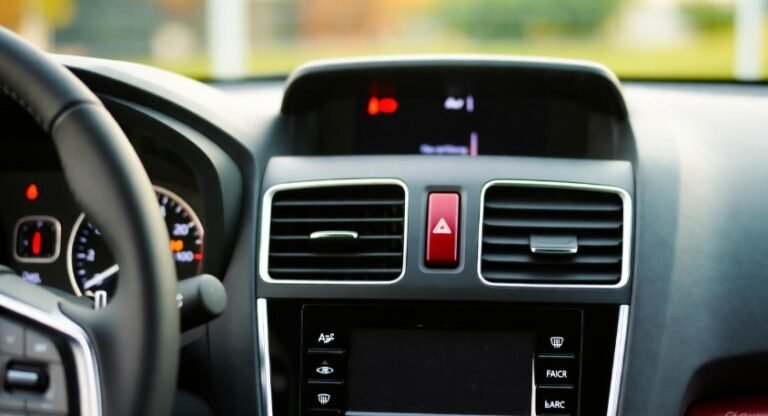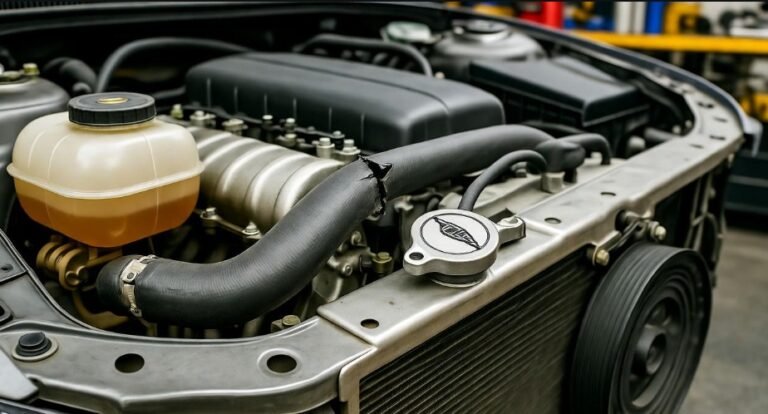Cycle Under 5000 With Disc Brake: Top Picks

Discover the best cycle under $5000 with disc brakes for a superior, safe, and smooth ride. Our expert guide simplifies your choices, highlighting top picks that offer exceptional value and performance for every cyclist.
In This Article
- 1 Key Takeaways
- 2 Why Disc Brakes Are a Game-Changer for Your Cycle
- 3 Understanding Disc Brake Types: Hydraulic vs. Mechanical
- 4 Top Picks: Cycle Under $5000 With Disc Brake
- 5 Factors to Consider When Buying Your Cycle
- 6 Pro Tips: Maximizing Your Disc Brake Bicycle Experience
- 7 Maintenance and Care for Your Disc Brake Bike
- 8 Frequently Asked Questions (FAQ)
- 8.1 Q1: What is the main advantage of disc brakes on a bicycle?
- 8.2 Q2: Are mechanical or hydraulic disc brakes better for a bike under $5000?
- 8.3 Q3: How do I know if a bike qualifies as a “cycle under 5000 with disc brake”?
- 8.4 Q4: Can I convert my existing bike to have disc brakes?
- 8.5 Q5: What kind of riding is best suited for a gravel bike with disc brakes?
- 8.6 Q6: How often do I need to service my disc brakes?
- 8.7 Q7: Are disc brakes heavier than rim brakes?
- 9 Conclusion
Key Takeaways
- Find affordable bikes with reliable disc brakes.
- Compare top cycle models under $5000.
- Understand disc brake benefits for safety.
- Choose the right bike for your riding style.
- Explore key features and brands in this price range.
Navigating the world of bicycles can feel overwhelming, especially when you’re looking for specific features like disc brakes within a budget. You want a bike that’s not only fun to ride but also safe and dependable, and sticking to a budget of under $5000 makes finding that perfect match seem even more challenging. Disc brakes offer a significant advantage in stopping power and performance, particularly in wet conditions, making them a highly sought-after feature. But where do you start? This guide is designed to simplify your search. We’ll break down what to look for and highlight some of the best cycle options under $5000 that come equipped with these powerful brakes. Get ready to find your next great ride!
Why Disc Brakes Are a Game-Changer for Your Cycle
When you’re looking for a new bicycle, especially one that offers excellent performance and safety, disc brakes are a feature worth prioritizing. Unlike traditional rim brakes, which squeeze the wheel’s rim to slow down, disc brakes work by clamping a rotor attached to the wheel’s hub. This fundamental difference leads to several significant advantages, making a cycle under $5000 with disc brake technology a smart investment for many riders.
The most notable benefit is their superior stopping power. Disc brakes provide more consistent and powerful braking, regardless of weather conditions. Rain, mud, or snow won’t degrade their performance as much as they would with rim brakes. This enhanced control means you can brake later and with more confidence, which is crucial for safety, especially on descents or in traffic. It’s a world of difference for your overall riding experience.
Another advantage is their reduced need for hand strength. The lever action required to apply brakes is often easier with disc brakes, making them more comfortable for long rides or for riders with less hand strength. They also tend to self-adjust as brake pads wear down, meaning less frequent maintenance and consistent performance over time. For anyone seeking a reliable and high-performing cycle under $5000, disc brakes are a feature that truly elevates the riding experience and safety quotient.
Understanding Disc Brake Types: Hydraulic vs. Mechanical
Within the realm of disc brakes, there are two primary types you’ll encounter: mechanical and hydraulic. Both offer improvements over rim brakes, but they differ in their operation, performance, and cost. Understanding these differences will help you choose the cycle under $5000 with disc brake technology that best suits your needs and budget.
Mechanical Disc Brakes
Mechanical disc brakes operate using a standard brake cable, similar to how rim brakes or older cantilever brakes work. When you pull the brake lever, the cable pulls a mechanism that moves the brake pads to clamp onto the rotor.
Pros:
- Cost-Effective: Generally less expensive than hydraulic systems.
- Easier Maintenance: Simpler to adjust and repair, often with common bike tools.
- Cable Compatibility: Can often be used with standard brake levers.
Cons:
- Less Power: Typically offer less overall stopping power compared to hydraulics.
- More Lever Force: May require more hand effort to achieve maximum braking.
- Cable Friction: Performance can be affected by cable housing wear and friction.
For a budget-conscious rider looking for the advantages of disc brakes, mechanical options are a great entry point. They provide a reliable upgrade over rim brakes and are found on many excellent entry-level to mid-range bikes.
Hydraulic Disc Brakes
Hydraulic disc brakes use brake fluid sealed within a system of hoses to operate. When you pull the lever, a master cylinder pushes fluid through the hose, which then actuates pistons at the caliper, forcing the brake pads against the rotor.
Pros:
- Superior Power: Offer the most potent and modulated stopping power.
- Easy Lever Feel: Require very little hand effort for strong braking.
- Self-Adjusting: Pads automatically adjust as they wear, maintaining consistent lever reach.
- Weather-Sealed: The sealed system is less affected by dirt and moisture.
Cons:
- Higher Cost: More expensive to manufacture and purchase.
- Complex Maintenance: Bleeding the system requires specialized tools and knowledge.
- Potential Leaks: Though rare, fluid leaks can occur and require professional repair.
Hydraulic disc brakes are generally found on more premium bicycles but are increasingly common on mid-range models as well. If your budget allows, they represent the pinnacle of braking performance on a bicycle.
Top Picks: Cycle Under $5000 With Disc Brake
Finding the right cycle under $5000 with disc brakes involves balancing features, performance, and value. We’ve scoured the market to bring you some of the most compelling options available today. These selections represent a range of riding styles, from road biking and gravel adventures to versatile hybrids, all ensuring you get excellent braking performance within your budget.
1. Trek Domane AL 4 Disc
The Trek Domane AL 4 Disc is an exceptional entry-level endurance road bike that truly shines for its value. It’s designed for comfort on longer rides, featuring Trek’s IsoSpeed decoupler in the seat tube to absorb road vibrations, providing a smoother experience. This bike is perfect for those looking to tackle paved roads, light gravel paths, and everything in between with confidence. The inclusion of hydraulic disc brakes means you get reliable stopping power in all conditions, making it a safe and enjoyable choice for commuting or weekend rides.
Key Features:
- Frame: Alpha 200 Series aluminum
- Fork: Domane carbon, tapered steerer
- Drivetrain: Shimano Tiagra 2×10 speed
- Brakes: Shimano Tiagra hydraulic disc
- Tires: Bontrager R1 Hard-Case Lite, 700x28c
- Mounts: Fender and rack mounts for versatility
The Domane AL 4 Disc is a fantastic option for riders wanting a comfortable, stable, and capable road bike that can handle varied terrain and weather thanks to its disc brakes. It’s a testament to how much performance you can get in a cycle under $5000 with disc brake technology.
2. Specialized Diverge E5
For the adventurer who craves exploration, the Specialized Diverge E5 is a standout gravel bike. This versatile machine is built to handle everything from smooth pavement to rough gravel roads and even light singletrack. The Diverge E5 boasts a lightweight E5 Premium Aluminum frame and offers a comfortable, stable ride with its progressive geometry. Its distinguishing feature for many is the future-shock suspension integrated into the steerer tube, which provides 20mm of travel to smooth out bumps, reducing rider fatigue. Paired with hydraulic disc brakes, the Diverge E5 offers unparalleled control and confidence on any escapade.
Key Features:
- Frame: E5 Premium Aluminum
- Fork: Diverge FACT carbon
- Drivetrain: Shimano GRX 400 2×10 speed (or similar depending on model year)
- Brakes: Shimano GRX hydraulic disc
- Tires: Specialized Pathfinder Sport, 700x32c
- Features: Powering the Diverge is its Future Shock 1.5 suspension
The Diverge E5 is a top-tier choice for a cycle under $5000 with disc brake capabilities, offering a blend of road efficiency and off-road prowess that few bikes can match. It’s ideal for bikepacking and multi-surface riding.
3. Cannondale Topstone Carbon 4
The Cannondale Topstone Carbon 4 is a highly capable gravel bike that offers a plush ride thanks to its unique Kingpin suspension system. This innovative rear suspension design provides 30mm of travel, isolating the rider from bumps and chatter without adding the complexity or weight of a full suspension system. The carbon frame is lightweight and responsive, making climbs feel easier and descents more controlled. Equipped with reliable hydraulic disc brakes, this bike excels on rough roads, gravel paths, and even light trails. It’s a fantastic option for riders looking for comfort and capability without compromising on performance.
Key Features:
- Frame: BallisTec Carbon Fiber with Kingpin suspension
- Fork: Full Carbon, tapered steerer
- Drivetrain: Shimano GRX 400 2×10 speed
- Brakes: Shimano GRX hydraulic disc
- Tires: WTB Riddler Comp, 700x37c
- Mounts: Numerous mounts for bottles and bags
For those seeking a truly comfortable and versatile cycle under $5000 with disc brake stopping power, the Cannondale Topstone Carbon 4 is an outstanding contender, offering a unique blend of compliance and performance.
4. Giant Revolt Advanced 3
The Giant Revolt Advanced 3 is a sophisticated gravel bike designed for speed and versatility. Its Advanced-grade composite frame is lightweight and stiff, providing excellent power transfer. Giant’s integrated compliance system, known as D-Fuse, in the seatpost offers a degree of vertical compliance, enhancing comfort on rough terrain without the added weight of traditional suspension. This bike is built for exploring further and faster, whether on gravel roads, fire trails, or even commuting. The powerful hydraulic disc brakes ensure confident stopping in any condition, making it a dependable choice for adventurous riders.
Key Features:
- Frame: Advanced-grade composite with D-Fuse seatpost
- Fork: Full composite, OverDrive steerer
- Drivetrain: Shimano GRX 2×10 speed
- Brakes: Shimano GRX hydraulic disc
- Tires: Giant Gavia Fondo 2, 700x37c
- Wheelset: Giant P-X2 Disc wheels
The Giant Revolt Advanced 3 is a great example of a high-performance cycle under $5000 with disc brake technology, offering a refined ride experience for gravel enthusiasts and adventurous commuters.
5. Scott Speedster Gravel 20
The Scott Speedster Gravel 20 is engineered for riders who want a do-it-all bike that can transition seamlessly from road to gravel. Its lightweight aluminum frame is paired with a carbon fork for a responsive yet comfortable ride. The geometry is optimized for stability on loose surfaces while maintaining efficient pedaling on pavement. This model comes equipped with reliable Shimano hydraulic disc brakes, ensuring consistent and powerful stopping power, which is paramount when exploring varied terrain. It’s an excellent choice for those seeking a robust and versatile cycle under $5000 with disc brake performance suitable for both daily commuting and weekend adventures.
Key Features:
- Frame: Speedster Gravel Disc, Alloy 6061
- Fork: Speedster Gravel Disc, Carbon
- Drivetrain: Shimano GRX 2×10 speed
- Brakes: Shimano BR-RS405 Hydraulic Disc
- Tires: Schwalbe G-One Allround, 700x35c
- Geometry: Endurance-oriented for comfort and stability
This bike represents a strong value proposition, offering a blend of speed, comfort, and control for a wide range of cycling disciplines.
Factors to Consider When Buying Your Cycle
Selecting a cycle under $5000 with disc brakes involves more than just picking a brand. To ensure you make the best decision for your needs, consider these crucial factors:
Riding Style and Intended Use
The first step is to define how and where you plan to ride. Are you primarily a road cyclist looking for a fast, efficient machine for long-distance rides or group outings? Or do you envision yourself exploring gravel paths, fire roads, and light trails? Perhaps a versatile hybrid is best for commuting and recreational riding. Your intended use will dictate the type of bike frame, geometry, tire clearance, and gearing you’ll need.
- Road Riding: Lighter frames, more aerodynamic positioning, narrower tires (25-32mm).
- Gravel Riding: More relaxed geometry, wider tire clearance (35-50mm), robust components, often with suspension features.
- Hybrid/Commuting: Upright riding position, versatility for racks and fenders, moderate tire width (32-45mm).
Frame Material and Geometry
The frame material significantly impacts the bike’s weight, ride quality, and cost. Aluminum is a popular choice for its balance of affordability, durability, and reasonable weight. Carbon fiber offers the lightest weight and best vibration-dampening properties but comes at a higher price point. Steel is known for its smooth ride and durability but is generally heavier than aluminum. Geometry refers to the angles and dimensions of the frame, influencing handling and rider fit. Endurance geometry, common on many disc-braked bikes in this price range, offers a more upright and comfortable position.
Drivetrain Components (Gears)
The drivetrain is the heart of your bike’s gearing system. For a cycle under $5000 with disc brakes, you’ll likely find drivetrains from Shimano (e.g., Tiagra, 105, GRX) or SRAM. Consider the number of gears and the gear range. Road bikes typically have compact or sub-compact cranksets with closely spaced gears, while gravel and mountain bikes offer wider gear ranges to tackle steep climbs. A 2x drivetrain (two chainrings up front) offers a broader gear range than a 1x drivetrain (one chainring up front), though 1x systems are simpler and lighter.
Wheel Size and Tire Clearance
Most road and gravel bikes in this price range will come with 700c wheels. However, some gravel and adventure bikes may also accommodate 650b wheels, which allow for wider tires while maintaining a similar overall diameter. Tire clearance is crucial – it’s the maximum tire width your frame and fork can accommodate. Wider tires offer more comfort and grip, especially on rough surfaces. Ensure the bike you choose has sufficient clearance for the types of tires you plan to use.
Brake Quality and Type
As the focus is on disc brakes, pay attention to whether they are mechanical or hydraulic. As discussed, hydraulic disc brakes offer superior performance and modulation. Within hydraulic systems, different component levels exist (e.g., Shimano’s entry-level hydraulic vs. higher-end offerings). For mechanical disc brakes, look for reputable brands that offer smoother cable actuation and better pad adjustment.
Brand Reputation and Support
Reputable bicycle brands often offer better build quality, more reliable components, and stronger warranties. Brands like Trek, Specialized, Cannondale, Giant, and Scott have established dealer networks, making it easier to find service, parts, and support across the USA. Buying from a local bike shop can also provide valuable expertise and after-sales service.
Pro Tips: Maximizing Your Disc Brake Bicycle Experience
Here are a few tips to help you get the most out of your new cycle with disc brakes:
- Keep Rotors Clean: Avoid touching the rotors with greasy fingers. Clean them occasionally with isopropyl alcohol to ensure optimal braking performance.
- Proper Bedding-In: New brake pads need to be “bedded in” to achieve full performance. Follow the manufacturer’s instructions, typically involving a series of moderate-speed stops.
- Check Pad Wear: Regularly inspect your brake pads for wear. Disc brake pads wear down faster than rim brake pads, especially in wet or dirty conditions.
- Learn Basic Adjustments: Familiarize yourself with how to adjust your brake levers and check cable tension (for mechanical discs) or pad contact (for hydraulics).
- Consider Tire Pressure: The right tire pressure can significantly impact ride comfort and performance, especially when paired with the added control of disc brakes.
Maintenance and Care for Your Disc Brake Bike
Investing in a quality cycle under $5000 with disc brakes means you’ll want to keep it in top condition. Proper maintenance ensures longevity, safety, and optimal performance. Disc brakes, while robust, have specific needs.
Regular Cleaning
A clean bike is a happy bike. After riding in wet, muddy, or dusty conditions, it’s essential to clean your bicycle. Use a gentle bike cleaner or mild soap and water. Pay special attention to rinsing off mud and grit from the drivetrain and braking areas. Ensure you don’t spray water directly into bearings (wheel hubs, bottom bracket, headset) at high pressure, as this can force water past seals.
Brake System Specifics
- Rotors: Keep rotors clean and free from oil or grease. A simple wipe-down with a clean cloth and isopropyl alcohol can remove contaminants. Avoid using degreasers or lubricants on rotors.
- Pads: Inspect brake pads regularly for wear. Most hydraulic disc brake pads have a minimum thickness requirement (often around 1mm of pad material remaining). If they are worn, they need replacing to maintain braking power and prevent damage to the rotors.
- Hydraulic Fluid: Hydraulic disc brakes require periodic “bleeding” – a process of removing old fluid and air from the system and replacing it with fresh fluid. This is typically recommended every 1-2 years, or sooner if the brake lever feels spongy or inconsistent. While you can learn to do this yourself with a proper bleed kit, many riders prefer to have it done by a professional bike mechanic.
- Mechanical Discs: For cable-actuated mechanical disc brakes, ensure the brake cables and housing are in good condition. Lubricate cables and housing annually, or sooner if they feel stiff or gritty.
General Bicycle Maintenance
Beyond the brakes, remember other crucial maintenance tasks:
- Tire Pressure: Check and inflate tires to the recommended pressure before every ride.
- Chain Lubrication: Keep your chain clean and lubricated. A dry chain wears out faster and shifts poorly.
- Bolt Checks: Periodically check that all bolts, especially those on the stem, handlebars, seatpost, and wheels, are securely tightened.
- Gear Adjustments: If your shifting becomes sluggish or inaccurate, your gears may need adjustment. This can often be done at home or at a local bike shop.
A well-maintained bike, especially one with the advanced technology of disc brakes, will provide years of reliable and enjoyable cycling. Consider visiting your local bike shop for a professional tune-up once a year to ensure everything is functioning optimally.
Frequently Asked Questions (FAQ)
Q1: What is the main advantage of disc brakes on a bicycle?
The primary advantage of disc brakes is their superior stopping power and consistency, especially in wet or muddy conditions, offering greater control and safety compared to rim brakes.
Q2: Are mechanical or hydraulic disc brakes better for a bike under $5000?
For a cycle under $5000 with disc brakes, hydraulic disc brakes are generally preferred for better performance, less lever effort, and modulation. However, good quality mechanical disc brakes can also be a reliable option on more budget-focused models.
Q3: How do I know if a bike qualifies as a “cycle under 5000 with disc brake”?
This refers to any bicycle with disc brake technology priced at or below $5000 USD. This price point typically includes a wide range of bikes from entry-level to mid-tier, across various disciplines like road, gravel, and hybrids.
Q4: Can I convert my existing bike to have disc brakes?
Generally, no. For a bike to have disc brakes, the frame and fork must be specifically manufactured with mounting points (caliper mounts and hub drilling for rotors). Most older bikes or those not designed for discs cannot be converted.
Q5: What kind of riding is best suited for a gravel bike with disc brakes?
Gravel bikes with disc brakes are excellent for mixed-terrain riding, including paved roads, gravel paths, dirt roads, and light singletrack. They offer versatility for commuting, adventure riding, and bikepacking.
Q6: How often do I need to service my disc brakes?
Disc brake pads should be inspected regularly and replaced as needed. Hydraulic systems typically need a fluid bleed and service every 1-2 years, while mechanical disc brakes require cable and housing maintenance and pad adjustments more frequently.
Q7: Are disc brakes heavier than rim brakes?
Yes, disc brake systems (including calipers, rotors, and sometimes stronger frames/forks) are generally heavier than comparable rim brake systems. However, the performance and safety benefits often outweigh the slight weight penalty.
Conclusion
Finding the perfect cycle under $5000 with disc brakes is an achievable goal that promises a significantly enhanced riding experience. Whether you’re drawn to the speed and efficiency of an endurance road bike like the Trek Domane AL 4 Disc, the adventurous spirit of a gravel bike such as the Specialized Diverge E5 or Cannondale Topstone Carbon 4, or the versatile capabilities of models like the Giant Revolt Advanced 3 or Scott Speedster Gravel 20, the options at this price point are abundant and impressive. These selections, featuring reliable hydraulic disc brakes, offer superior stopping power, control, and confidence in all conditions, crucial for both safety and performance. By considering your riding style, understanding the nuances of brake types, and prioritizing quality components, you can confidently select a bike that will provide miles of enjoyment and dependable service.






